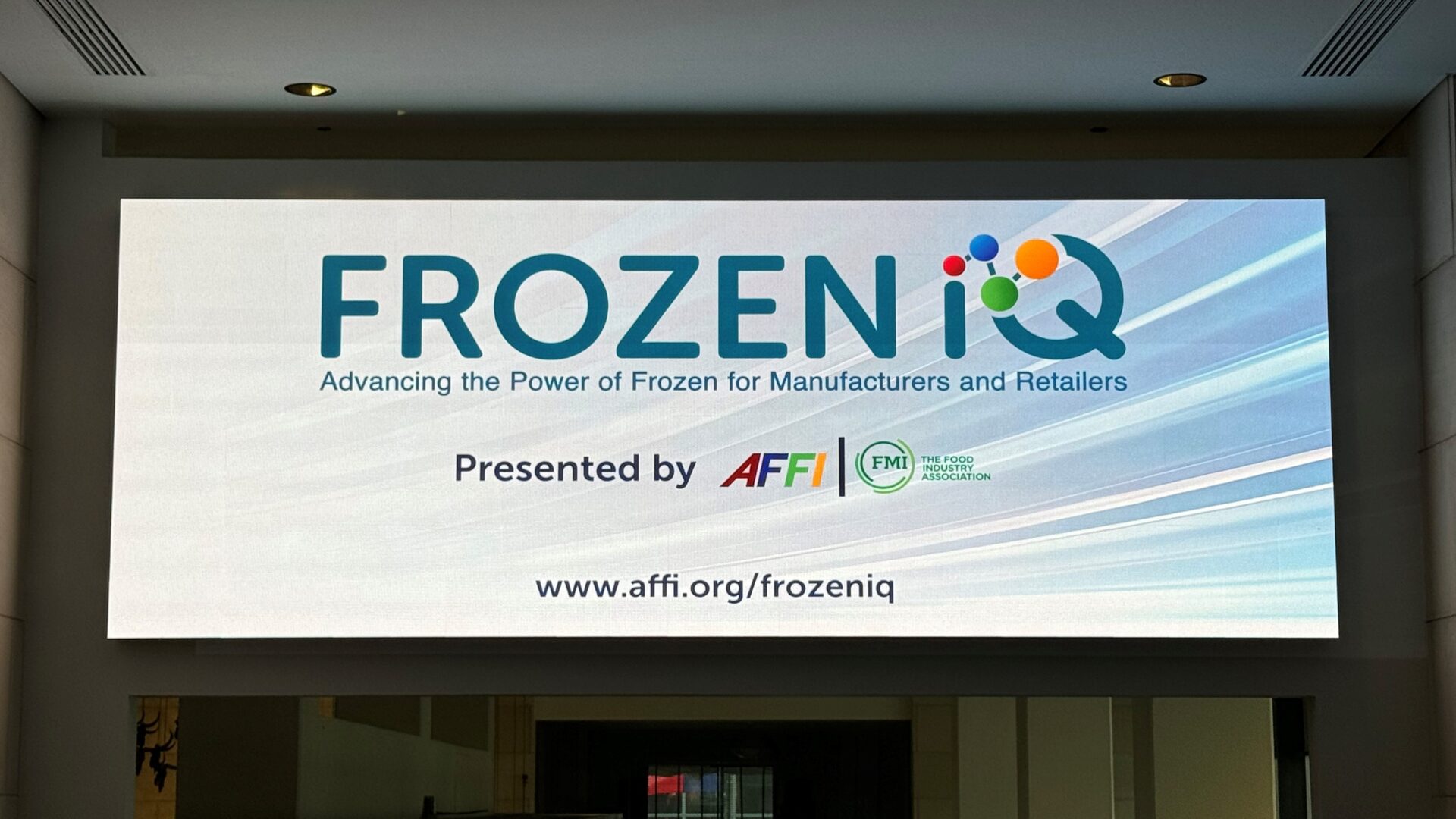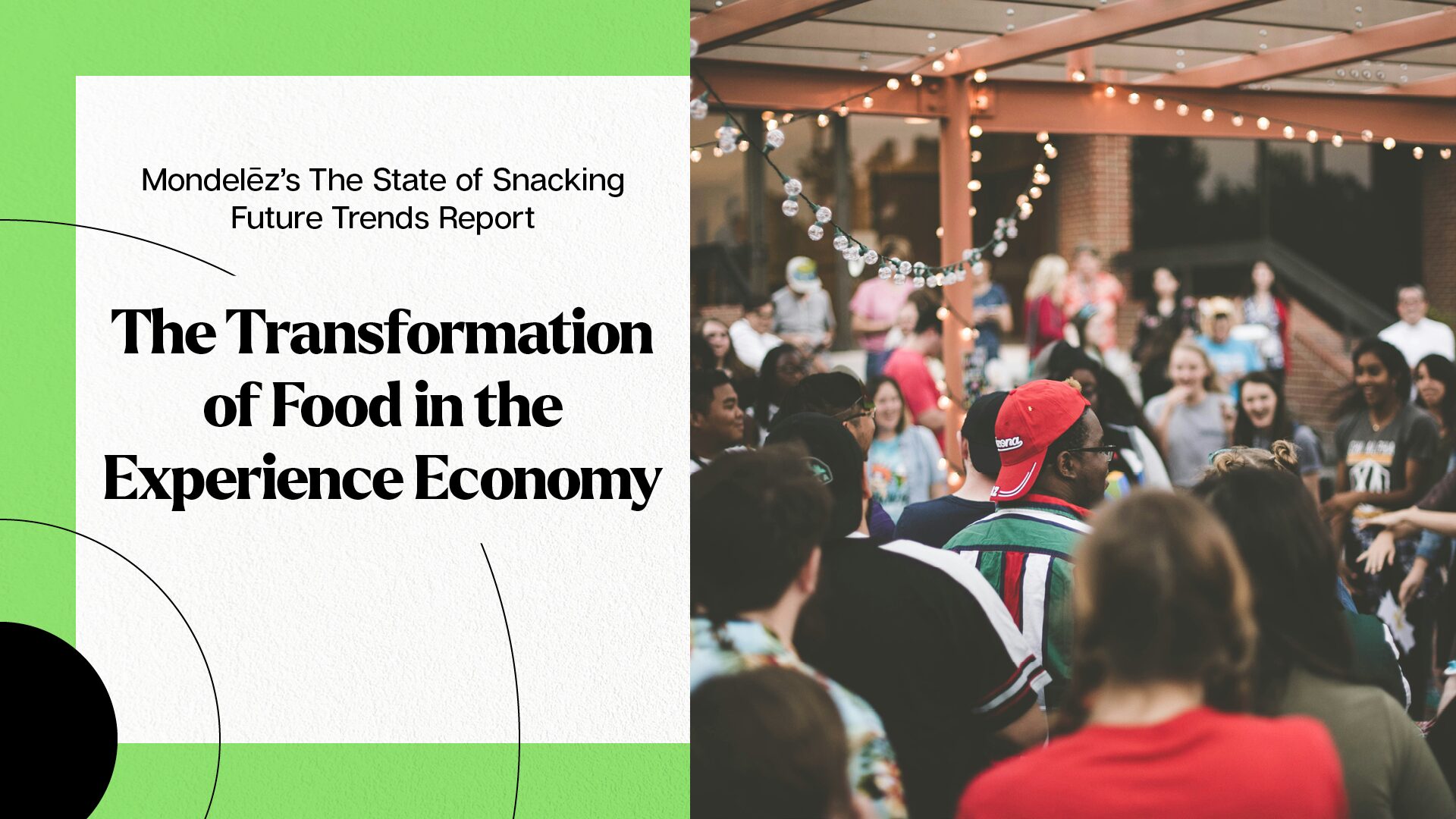FORTH WORTH, Texas — The agenda at Frozen IQ was very simple – to empower and grow the frozen food industry through the sharing of frozen-specific insights and opportunities.
Hosted by the American Frozen Food Institute (AFFI) and FMI, The Food Industry Association, the two-day conference featured speakers on a wide variety of topics impacting the future of the frozen food marketplace, ranging from emerging technologies to consumer sentiment.
The event’s programming focused on market insights and trends, providing a baseline for manufacturers, retailers, and other stakeholders in the frozen food industry to form new partnerships and opportunities for success.
Meeting the Needs of Inflation-Strapped Consumers
Sally Lyons Wyatt, Circana’s global EVP and chief advisor, consumer goods and foodservice insights, noted that CPG prices were up around 30% on average when compared to 2019, outpacing wage growth and leaving cash-strapped consumers to amass debt.
“Consumers are not making as much money and they need to continue to keep up with the increasing costs on groceries and eating out at restaurants, but also with the costs of general merchandise, their rent, their healthcare – all of it,” she noted.
Randy Burt, partner and managing director at AlixPartners, highlighted the impact of inflation on frozen shoppers. He shared data showing that 32% of U.S. frozen shoppers have cut back on non-essential purchases; 30% are looking more for sales; and 28% have switched to lower-priced brands.
Leo Feler, chief economist at Numerator, noted that although prices for foods are up, many frozen foods are more affordable today under market conditions due to rising personal income.
He highlighted frozen seafood and frozen and freeze-dried prepared foods that were all relatively more affordable in 2024 when compared to the pre-pandemic period.
Private Label Remains a Growing Presence
Wyatt noted frozen food’s dollar growth is primarily concentrated among private-label brands, which showed a 4.4% increase in dollar sales in the 52 weeks ending April 21. This was compared to a 0.1% decrease for national brands.
Burt also shared data showing 96% of frozen shoppers did not think a brand indicated quality. Ninety-five percent of consumers said they didn’t prefer brand names, and the same percentage said they frequently considered private-label products.
“I think it’s really a wake-up call that to the CPG folks in the room that private label is here and it’s interesting because only one of five of the CPG respondents in the AFFI survey saw private label as competitive, so 80% see it as an opportunity,” he noted.
Bringing a Premium Experience to the Dining Room
David Portalatin, senior VP and food industry advisor at Circana, noted that frozen foods could help bridge the gap for consumers who seek premium, restaurant-quality foods at home. He noted relative value isn’t the only reason consumers head to restaurants, however, and that frozen food makers have to keep that dynamic in mind.
“When consumers go out to eat, value is not always about absolute low price. If our eating occasion was really motivated by the most affordable option, I’m going to my refrigerator, my freezer, and my pantry every single time,” he said.
Amy McClellan, SpartanNash EVP and chief customer officer, shared that the company had developed the Finest Reserve by Our Family private-label line, and was selling gourmet, imported pizzas for $7.99. She argued the products are well-positioned as a high-quality private-label item that replicates a foodservice-style offering.
On the CPG side, it is possible to reinvigorate older brands to meet the emerging demands of younger consumers. Burke Raine, president of refrigerated and frozen at Conagra Brands, noted the company had spent the last decade on a transformation journey that saw the company turn legacy items into premium brands, highlighting the Banquet, Healthy Choice, and Marie Calendar’s brands as examples.
Emerging Technology Can Boost Frozen Uptake
Bryce Daigle, senior director of market strategy and planning at Instacart, noted many were expecting a 10% CAGR for online grocery between 2023 and 2027, with some projecting a CAGR of 35% during the period.
He noted this was good news for frozen food makers and retailers alike, as there was a 25% average increase in basket size on the company’s e-commerce platform when frozen foods were included in an order. This dynamic also led to a $24 increase in basket size when frozen items were included for baskets with six or more items.
He also highlighted the company’s Caper Cart, a smart shopping cart solution it was testing with certain retailers to help improve the in-store experience for consumers.
This technology wasn’t constrained to the retail sector, however; many home appliances were receiving updates to make them more convenient and better suited to preserving and preparing frozen foods.
Robin Liss, CEO and founder of Suvie, shared details about her company’s cool-to-cook smart appliance. The Suvie is designed to store frozen, high-quality pre-made meals at a safe cold temperature before cooking them.
Meanwhile, Peter Vossler, senior manager of product training with LG Electronics, shared how his company is developing new technologies that could help to better maintain temperatures within freezer units to ensure the safety and quality of frozen foods.
Contending with and Helping to Shape New Regulations
AFFI positioned itself as a leader in both lobbying Congress for the inclusion of frozen in federal feeding programs and shared its own programs to progress sustainability initiatives.
Dr. Sanjay Gummalla, senior vice president of scientific affairs at AFFI, introduced the concept of increasing storage temperature of frozen foods, for e.g. from zero degrees Fahrenheit to five degrees, and noted the energy consumption could be reduced by an estimated 25 terawatt hours/yr and GHG emissions of 17 Mt CO2 equivalents/year could be avoided with this shift across the global frozen food chain.
“[25 terawatt hours] is what it takes to power 500,000 homes in a year, 4 million lives across the country. So that’s pretty significant in terms of energy consumption,” he noted.
Alison Bodor, president and CEO of AFFI, also shared how the organization helps promote frozen foods in the Farm Bill and other efforts on Washington Hill.
“Get involved. We need you,” Bodor said. “We are there all the time in Washington… we need you in there, building up relationships through a number of firms telling your story. So as we start to talk about what we can do on energy, for example, and how we as a supply chain are going to work together to raise touch the storage temperature of frozen and create these incredible synergies around.”
Propelling the Frozen Food Industry Forward
Attendee discussions in between sessions seemed to focus on increased collaboration along the frozen food supply chain. Retailers and manufacturers alike celebrating the increasing focus on frozen foods with consumers, who were seeking value in many forms.
While providing frozen products at (or near) price parity with other food items was important in the overall value chain for consumers, sustainability, convenience, nutrition, and longer storage times were other key considerations for consumers as they purchase frozen foods.
Due to these dynamics, frozen food appears well-positioned for the years to come, and stakeholders within the value chain have plenty of opportunities to create and collaborate on products that resonate with consumers who are seeking to extend their wallets and find new, high-quality dining opportunities.
The Food Institute Podcast
Funding sources are drying up and inflation is making it harder and harder for higher-priced food brands to compete – what’s an early-stage food company to do? Dr. James Richardson, owner of Premium Growth Solutions and author of Ramping Your Brand, joined The Food Institute Podcast to discuss what types of food companies are succeeding under current industry dynamics.












